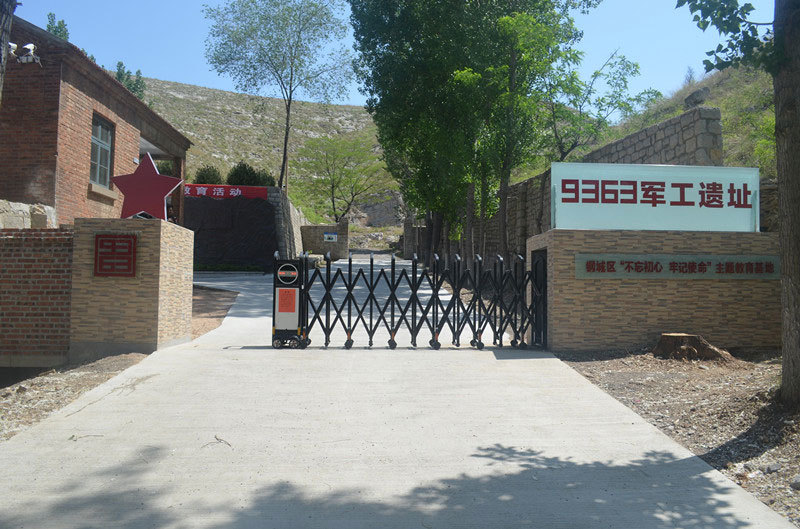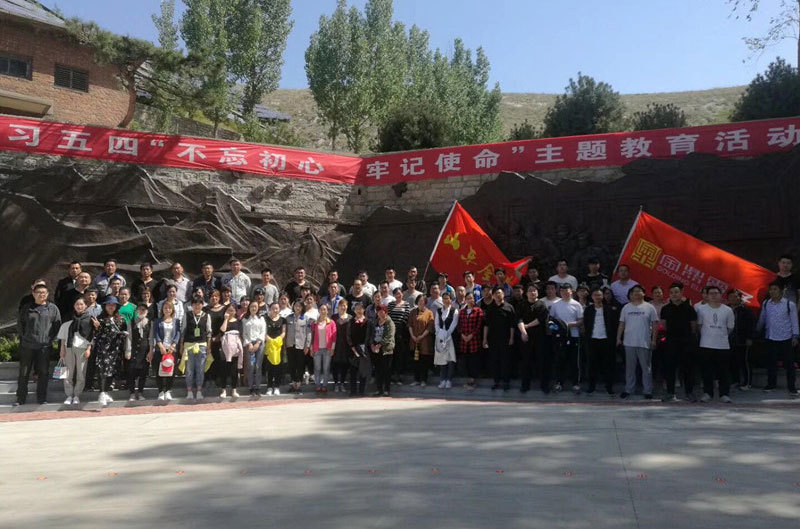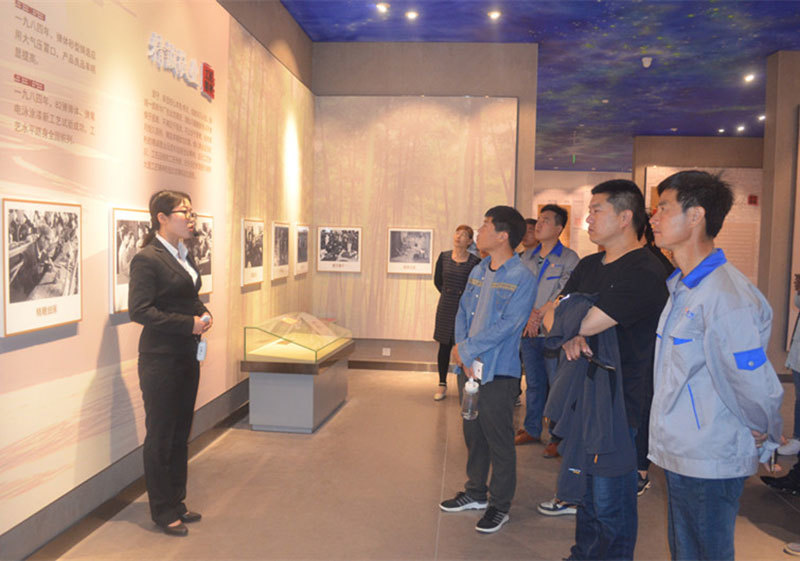
Do not forget the original intention, keep in mind the mission - the company organized a visit to the 9363 military site
2018-05-10
作者:
浏览量:
There is a magical place in the southern mountainous area of Laiwu, where people used to be full of voices and machines were roaring. It has long since belonged to a peaceful small mountain village, but now it has been reborn in another way and re-entered our field of vision. It is the 9363 Military Industrial Heritage Park in Gangcheng District.

In order to carry forward the red culture, inherit the red genes, let the majority of party members and employees "never forget their original aspirations and keep their mission in mind", strengthen their ideals and beliefs, and carry forward the spirit of not being afraid of hardship, fatigue, and hard work, the company organized party members, More than 80 members and key business personnel visited the 9363 Military Heritage Park.

Everyone visited the eight themed sections of "Looking at Gu Township, Red Imprints, Wind and Rain Spring and Autumn, Entering the Mountains, Silent Battlefield, Bitter and Happy Years, Full of Love, and Soul Casting Green Mountains". The deep mountains hide the passionate youth of several generations. The spirit of revolution and hard work, hard work and skillful work, lose ten pounds of meat, leave it with a few sweats, and fail to complete the task and fail to get off the front line.” The spirit deeply inspired everyone, not forgetting the original intention, standing on the post, and constantly advancing.


About 9363 Factory
9363 Factory Introduction
The former site of the former Xinhua sand foundry factory (state-owned 9363 factory) is composed of Dashangyu, Huicaiyu and Dongyu in the High-tech Park of Gangcheng District, and Qingyehang Village in Wenyuan.
Why build the 9363 factory
In order to defend against foreign enemies, Chairman Mao Zedong proposed the strategic concept of the construction of the three fronts in 1964. His old man divided the country into the front, the middle and the strategic rear, which were referred to as the first, the second and the third for short. The first-tier areas refer to the front-line areas along the borders and the coast; the second-tier areas refer to the eastern half between the first-tier areas and the Beijing-Guangzhou Railway; the third-tier areas refer to the central and western provinces, including Sichuan, Gui and Yun in the southwest and Shaanxi, Gansu, and Ningxia in the northwest. , Qing is commonly known as the "big third line", and the hinterland of the first and second line areas is commonly known as the "small third line". The "Little Third Front" is led by the National Defense Industry Office of each province. It mainly produces semi-automatic rifles, grenades, mortar shells and other conventional weapons, and strives to achieve "province" self-defense and resistance in the future anti-aggression war.
The third-tier enterprises in Shandong are mainly distributed in Yiyuan, Mengyin and Yishui counties in the Yimeng Mountains. At that time, these villages such as Dashangyu and Dongyu belonged to Yiyuan County in Linyi area in terms of administrative affiliation. From 1966 to 1986, there were more than 10 military industrial enterprises in Shandong, among which Shandong Xinhua Factory (referred to as Xinhua Factory) produced various types of mortar shells. Xinhua Factory consists of 101, 102-105 workshops. The factory is located in the northern mountain of Dashangyu, 101 is located in the south of Xiaoshangyu Village, 102 is located in Huicaiyu, 103 is located in Dongyu, 104 is located in Qingyehang, and 105 is a farm. At the peak, there were nearly 4,000 employees, and it was said to be even more prosperous than Laigang before.
Status of 9363 Factory
After the reform and opening up, during the period from 1980 to 1984, under the unified organization of the Provincial Military Industry Bureau, several third-tier enterprises joined forces to carry out large-scale "two major items" ("Golden Elephant" brand bicycles and "Double Happiness" brand sewing machines). For production activities, Shandong Xinhua Sand Turning Factory (State-owned 9363 Factory) is mainly responsible for the casting of sewing machine heads and racks, as well as the production of sewing machine tabletops. In 1997, Xinhua Factory was relocated to Tai'an, and in 2007, Shandong Xinhua Machinery Factory went bankrupt.
The once lively small mountain village has also recovered its tranquility as people go to empty buildings. The relocated Xinhua Factory left a large number of abandoned buildings. It is understood that Factory 101 has become a sheet factory, and several other factory sites have not been fully utilized. Because of this, the original appearance of the Xinhua Factory was preserved.
Reasons for the relocation of the 9363 factory
The international environment and market environment have changed, the possibility of war has become smaller, and military technology is also advancing by leaps and bounds. Traditional weapons such as mortars are gradually being replaced by modern weapons. A large number of military enterprises have no orders and need to be restructured. The success has led to the poor efficiency of the Xinhua Factory, and survival has become a problem.
All the employees have been in the ravine enough. Back then, the leaders of Laigang wanted to urbanize the location of Laigang, and now Laigang has basically realized it. The Xinhua Factory does not have such courage, and it has not been merged by Laiwu Steel. The employees feel that they will be abandoned by the society.
Some small third-tier lines in Laiwu
Some of the small third lines in Laiwu include Laiwu 709 Factory (the former Shandong People's Printing Factory), No. 17 Factory (Shandong Automobile Repair Factory), No. 15 Factory (Shandong Chaoyang Repair Factory), 674 Factory (Laiwu Power Plant), 701 Factory (Laiwu Factory) Iron and Steel Plant), 9363 Plant (Shandong Xinhua Sand Turning Plant), etc.




